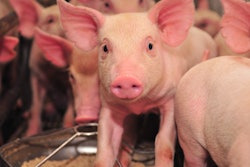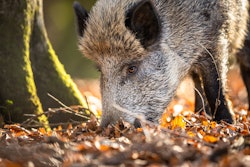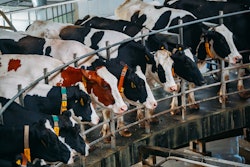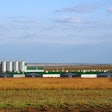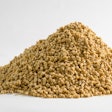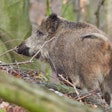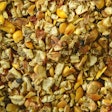
Elizabeth Doughman, editor, WATT PoultryUSA and Poultry Future: Hello, I’m Elizabeth Doughman, the editor of WATT PoultryUSA and Poultry Future.
This Future of Poultry podcast is brought to you by Central Life Sciences. Central Life Sciences is the maker of Starbar products. Insect control starts with Starbar brands. With products scientifically tailored to insect behavior at pinpoint locations, Starbar products have delivered reliable results that have been trusted for more than 40 years. Learn more at www.starbarproducts.com.
In today’s episode, my guest is Chris Greene, national account manager – Farm & Ranch at Central Life Sciences.
Thanks for joining us today, Chris.
How do fly infestations contribute to the spread of diseases that impact poultry health and egg production, and what role does this play in the current egg shortage?
Chris Greene, national account manager – Farm & Ranch, Central Life Sciences: Flies are one of the top vectors of disease in the world. When we look at flies, you see them land and stick their noses out and you wonder what they're doing. They're actually absorbing and taking in whatever they're putting out. They’re attracted to things like our foods that we leave out, but they really like things that are kind of rotten, you know, rotting manure and things of that nature. That's what they're really attracted to, especially moist areas.
What they do is they take up these different bits and they spread them around. Everywhere they land, they can move these vectors around. The vectors that we're talking about are diseases, pink eye, things of that nature. All of these can be spread around wherever these flies can land. The more flies you have around, obviously the larger area they can cover and spread more disease that way. We want to work to keep these fly populations down and not spread diseases.
Egg production is a hot topic right now. What we call avian influenza or bird flu, all of these vectors can possibly be spread around with flies as well. So, you see these types of things can affect your egg production by not keeping these vectors out of your systems and preventing disease throughout your poultry house.
Doughman: Can you explain how disease transmission from flies affects flock health, egg yield and overall farm productivity, especially during times of increased demand?
Greene: When we have flies overpopulating a poultry house, you'll go in there and see increased illnesses within these birds. I'm not getting real specific because there's several different ones that can spin around and you would have to get an analysis to see exactly what they're doing.
But anytime you get sick birds, you might have to reduce your flock to loss and things of that nature. We're seeing quite a bit of this, especially with things like avian influenza right now, which is reducing the egg population and production in your flock. We want to make sure that not just utilizing microorganism biosecurity, but also reducing vectors like flies.
Another thing you might see is rodenticides, rodents, things like that. Those are all vectors that spread disease and taking these types of vectors out of your flock will help prevent the diseases that are out there.
Doughman: What are the most effective strategies for controlling flies in poultry houses while maintaining strict biosecurity protocols?
Greene: In addition to the biosecurity protocols that you see daily on a poultry outfit you might see, like shower in, shower out. Those are things that we control ourselves, keeping ourselves clean, not exposing ourselves to other flocks, things of that nature. But when it comes to flies, that's a little bit harder to do.
You want to control your environment in the best ways. For example, keeping fly control products, like Quickstrike fly bait or Exhalt, which is an insect growth regulator that you can add to the litter to keep flies from producing into adults, things of that nature that you can use inside the house as well as outside the house baits and sprays that Starbar provides.
Keeping weeds and brush down outside and just keeping that fly population to a minimum is a great way to do that.
Doughman: How do Starbar products support these efforts to protect poultry operations and egg production?
Greene: I think our biggest is being an asset to these poultry producers.
They can contact anyone at Starbar at any time. We have a deep understanding of the entomology and the science behind all of these fly issues that you might have. And we have people on staff that can study these flies and take samples and get results to the producer on a daily basis.
We consider ourselves the experts in fly and vector control when it comes to flies and other insects. So, utilizing the tools that we have internally is a great way to set a protocol. And it's hard to get on farms now because of the biosecurity, but we can take a look at things from a 10,000 foot view per se and go ahead and prescribe a protocol that will help prevent flies from increasing on any type of poultry outfit.
Doughman: Thanks again, Chris, and thanks to you for tuning in. For more information on the solutions discussed here today, visit Central Life Sciences at www.starbarproducts.com.
For more episodes of the Future of Poultry podcasts, please like and subscribe on WATTPoultry.com or wherever you access podcasts.


